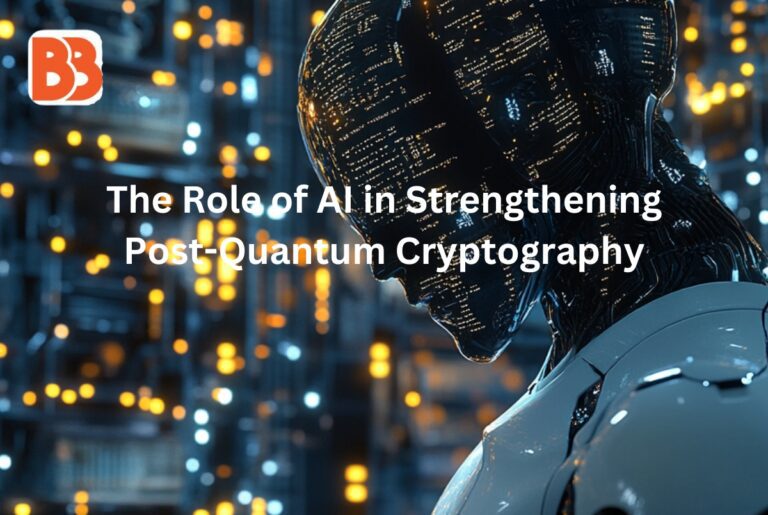Threat has led to the rise of post-quantum cryptography (PQC), an area of cryptography designed to withstand attacks from quantum computers. But the development of PQC is itself a complex and evolving task, and this is where artificial intelligence (AI) plays a crucial role. AI’s ability to analyze vast amounts of data and learn patterns is proving instrumental in bolstering PQC algorithms, testing their strength, and anticipating potential vulnerabilities. Let’s explores how AI is contributing to the robustness of post-quantum cryptography.
The Challenge of Designing Quantum-Resistant Algorithms
Quantum computers operate fundamentally differently than classical computers. They leverage principles like superposition and entanglement to process data exponentially faster for specific tasks. Algorithms like Shor’s algorithm, for example, allow a quantum computer to break traditional encryption methods, such as RSA, elliptic curve cryptography, and Diffie-Hellman key exchange, which rely on the difficulty of factoring large prime numbers.
However, the complexity of these algorithms introduces challenges:
- Identifying Robust Algorithms: It’s challenging to anticipate which mathematical problems will genuinely resist quantum decryption.
- Testing Against Attack Scenarios: PQC algorithms must be tested against both classical and quantum attacks to verify their security.
- Balancing Security and Efficiency: Some PQC algorithms require significant computational resources, raising concerns about performance.
AI’s Role in Strengthening Post-Quantum Cryptography
Artificial intelligence, particularly machine learning (ML), has the potential to address many of these challenges in the development and implementation of PQC. Here’s a look at some key areas where AI is helping to enhance post-quantum cryptography:
Algorithm Selection and Optimization
With the large number of candidate algorithms for PQC, selecting the most secure and efficient ones is no simple task. AI can help in the following ways:
- Algorithm Evaluation: AI can be used to evaluate and rank candidate PQC algorithms based on their performance and security features.
- Optimizing Parameters: Many PQC algorithms have configurable parameters, such as key sizes or the complexity of the underlying math problem.
- Reducing Resource Consumption: AI-driven optimization helps reduce the computational load of PQC algorithms, making them more feasible for real-world applications.
Vulnerability Detection Through AI-Driven Attacks
One of AI’s most valuable roles in PQC development is as an adversarial tool. By using AI to simulate potential attacks, cryptographers can gain insights into possible weaknesses in PQC algorithms:
- Simulating Quantum-Like Attacks: Although we don’t yet have large-scale quantum computers, AI can help simulate their behavior.
- Adversarial Testing: AI techniques like Generative adversarial networks (GANs) are being used to generate a wide range of attack scenarios. GANs work by having two neural networks—the generator and the discriminator—compete to improve each other.
- Predicting Emerging Threats: AI models can help predict new forms of attacks by analyzing historical data on cryptographic breaches.
Automated Proof Verification
In cryptography, security proofs are essential for verifying the strength of an algorithm. However, writing these proofs is complex and often prone to human error. AI can simplify this process:
- Formal Verification: AI-driven automated verification tools can assist in the development of formal proofs for PQC algorithms. Machine learning algorithms can cross-reference security proofs against existing cryptographic models.
- Accelerating the Proof Process: AI can also speed up the lengthy process of proof verification, helping cryptographers validate new algorithms more quickly and confidently.
Enhancing Key Management and Security
Efficient key management is crucial in PQC, especially for large-scale systems with frequent key exchanges, such as cloud services. AI can streamline and secure these processes:
- Intelligent Key Distribution: AI can help automate key distribution processes, ensuring that encryption keys are securely generated, stored, and shared across networks.
- Anomaly Detection in Key Exchange: AI-powered systems can monitor key exchange activities for unusual behavior. For example, machine learning algorithms can detect signs of interception or tampering in real time, alerting administrators to potential threats.
Data Encryption and Compression
As PQC algorithms often require larger key sizes, they can significantly increase data overhead, which can be problematic for bandwidth and storage. AI can help mitigate this issue:
- Data Compression: AI algorithms can optimize data compression for systems that rely on PQC, reducing the impact of larger key sizes and making data transfer more efficient.
- Automated Encryption Protocols: Machine learning models can also manage and automate PQC encryption protocols, ensuring that encrypted data remains secure even if network conditions fluctuate.
The Future of AI and PQC: A Symbiotic Relationship
As quantum computing technology advances, the relationship between AI and PQC is likely to deepen. The future may see AI-driven tools integrated into cryptographic workflows, providing continuous, automated testing and adaptation for PQC algorithms in response to evolving quantum threats. Here’s a look at what might be next:
- AI-Driven Cryptographic Design: In the future, AI could play an even greater role in the actual design of cryptographic algorithms.
- Adaptive Cryptographic Systems: AI could make cryptographic systems more adaptive by automatically switching between cryptographic protocols based on real-time threat detection.
- Ongoing Optimization and Self-Healing Systems: AI has the potential to enable self-healing cryptographic systems that can detect and patch vulnerabilities autonomously, reducing the need for human intervention.
Conclusion
The rise of quantum computing presents an unprecedented challenge to the security of our digital world. In the face of this threat, AI and PQC are working hand-in-hand to create a resilient defense. From optimizing PQC algorithms to simulating quantum-style attacks, AI’s role in PQC goes far beyond algorithm development; it is enabling a comprehensive approach to cryptographic resilience. As we approach the era of practical quantum computing, the combination of AI and PQC represents our best hope for a secure digital future.
